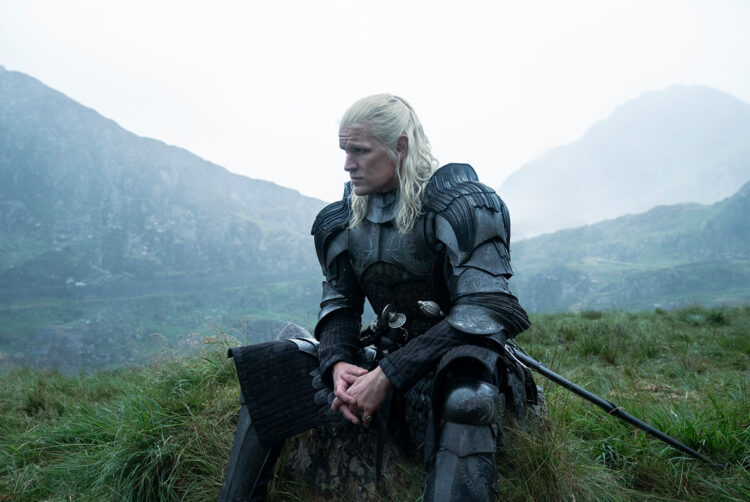‘ADsorption’ and the long tail of the dragon

Opinion
Enhanced measurement beyond attention metrics can better show the long tail of engagement on BVOD, allowing for more long-term brand opportunities for advertisers.
You just have to look at the recent Thinkbox research around profitability to be reminded (once again) of the scale, reach and impact of TV advertising. But how can marketers optimise their investments, avoid questionable data, improve safety and measurability, as well as identify the moments that matter?
With so many options, buzzwords and acronyms out there (CTV, FAST, AVOD etc), it’s not easy to know where best to put your media money. We know viewers watch in different ways and that VOD in all its forms is an important part of today’s mix (especially for certain content types and audiences). With Barb capturing more of the new players, it shows us (to the surprise of many) that linear and broadcaster VOD (BVOD) still account for a whopping 80% of TV set viewing.
For the first quarter of 2024, subscription VOD (SVOD) content provided less than 5% unique reach and this reduces further if you look at ad-tier viewing. Thinkbox’s latest trends in TV also highlighted that the emerging advertising-supported VOD (AVOD) players, such as Samsung, Rakutun and Roku, while big in the US, are yet to make a meaningful impact in the UK, accounting for less than 0.1% of total TV viewing time.
Long tail of the dragon
So, about those dragons. If you haven’t got BVOD as part of your mix, you’re missing out, particularly around premium drama. For context, 78% of Sky Atlantic’s viewing comes from VOD, whereas by contrast Sky News and Sky Sports are 99% live. A few other recent examples:
- Oppenheimer and Barbie: 63% VOD
- Ted: 58% VOD
- True Detective (series four): 46% VOD — compared with 9% for season one in 2014
What’s interesting for True Detective is that in the two weeks following the season four premiere, half-a-million people went back to watch (or rewatch) series one episode one, which was initially broadcast a decade ago. This reappraisal effect extends to other places like Channel 5, where dramas like The Cuckoo or Coma see renewed interest, prompting viewers to seek out similar content.
House of the Dragon (returning 17 June) has caused similar bumps in Game of Thrones viewing, but the long tail of House of the Dragon makes for compelling reading for marketers. The 2am US simulcast of House of the Dragon series one earned average viewing of just under 500,000. If you then take same-day showings (9pm) and on-demand, total reach rises to 1.4m. Extending that to the first seven days, viewing increases to 3.3m. Critical acclaim and talkability drove extra viewing by an additional 1.1m people over the next three weeks, giving a total audience of 4.4m.
Thanks to enhanced industry measurement, we can now track BVOD viewership for an even longer window. House of the Dragon serves as a prime example — even 500 days after its premiere, the audience has grown by nearly another million, bringing the total audience to 5.3m. This long-tail effect bodes well for the upcoming series launch and beyond.
For marketers, this highlights the enduring value of premium, professionally produced content readily available on BVOD platforms. This extended and dynamic viewership window translates into long-term brand engagement opportunities. Viewers can revisit content and discover new favourites at their convenience and this sustained engagement creates a valuable, brand-enhancing environment for advertisers.
From attention to ‘ADsorption’
Attention is the metric of the moment and it’s massively important as this is where TV excels. Watching high-quality content on a bigger screen drives a significant uplift in attention, talkability and business measures. According to the latest study by Thinkbox:
- The right in-home context increases ad recall by up to 6.3 times, while high-quality, professionally made content drives 60% higher ad recall than non-professional content
- People are 44% more likely to trust advertising seen within professional content
- TV screens drive the highest recall: 34% more than on a computer and 60% more than tablets or smartphones
TV is already known for having the highest attention rates (eyes on screen) and generating the most profit — but what about the emotional connection with viewers? What about how absorbed and immersed you are in that content — what impact does that have and how can advertisers harness it?
We’re in the final stages of our biggest-ever Sky Media study into video content, mood states and levels of absorption. In June, we’ll be releasing The Age of ADsorption study and a new proprietary ADsorption Index. This metric aims to go beyond attention with key components like emotional involvement with the content, if it’s watched all the way through and memorability. We’ve also identified a range of “absorption moments”.
This will help advertisers create stronger connections between audiences and their messages, and deliver a greater brand impact and more effective use of budgets.
The shift in focus from attention to absorption signifies a new era for video content measurement. So whether it’s edge-of-your-seat sport or on-demand dragons — where and when you say it counts and creating connections matters.
 Ruth Cartwright is investment director at Sky Media
Ruth Cartwright is investment director at Sky Media



